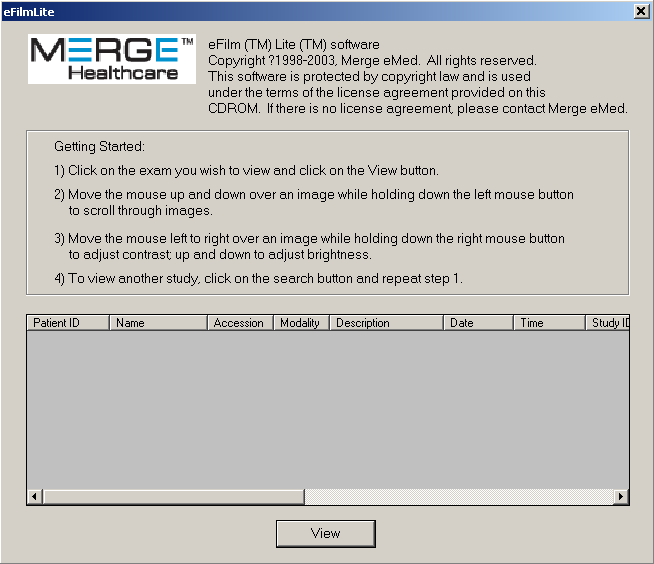

If you have a fracture in one limb, your doctor may want a comparison x-ray of your uninjured limb. You will probably be x-rayed from several angles. Less dense soft tissues and breaks in bone let radiation pass through, making these parts look darker on the x-ray film. Obviously, I got over that on day 1.Bones, calcifications, some tumors, and other dense matter appear white or light because they absorb the radiation. I know this sounds SO silly but for whatever reason, I was really sad about all the clothes we bought that he wouldn’t ever wear. I put him in his Love to Dream swaddle and laid him on top of the Snoo sack with the arm straps around his waist. The Snoo sacks are actually super tight on the hips – I wish they would change them, so there is no way he could fit in one anymore.
How do i view my sonogram with efilm lite full#
We have the Snoo – and we spent way too much money on it to just give it up so I was determined to make it work – full review on it HERE. You can prop him up on a Boppy for tummy time, but we really couldn’t do this for extended periods of time. Because he couldn’t really be on his stomach at all, his head got flat from laying on his back so much. So this was the one downside of our whole experience. We do bottles only- so I can’t speak to how this affects breast-feeding! I actually almost felt safer with him in the harness because he couldn’t roll off of anything! What about Tummy Time? I held him so tight the night before thinking I would never be able to again, but then once it was on, it was totally fine! Obviously, things were a little different, but I don’t feel like I missed out on anything because of it. This was my biggest anxiety about the whole thing. Depending on the age of the baby and the severity of the dislocation, they may also need surgery or to be put into a Spica cast. After the 6 weeks, we got another ultrasound and he only had to wear it for naps and nights. He wore it 24 hours a day for 6 weeks, with the occasional bath & washing of the harness being the only exceptions. We were told he could be in it anywhere from 6 weeks to 6 months. This may be why the left hip tends to be more affected. Babies in the breech position are more likely to have hip instability than babies in a normal womb position and have an increased risk of DDH.īaby Joe’s doctor put him in a Pavlik Harness so start to treat his hip dysplasia. It’s thought that babies in a normal position in the womb have more stress on the left hip than on the right hip. The positioning of the baby in the womb can cause more pressure on the hip joints, stretching the ligaments. This is also why hip dysplasia is often referred to as developmental dysplasia of the hip (DDH). This is because hip dysplasia is known to develop around the time of birth, after birth, or even during childhood. However, it is widely believed that hip dysplasia is developmental. It’s actually super common, and I was shocked that I had never heard of it before. DDH is a medical term for general instability, or looseness, of the hip joint. We go back for our X-Ray at the end of this month – so prying everything still looks good! What is Hip Dysplasia?Īccording to the International Hip Dysplasia Institute, Hip Dysplasia is often referred to as Developmental Dysplasia of the Hip or DDH and is generally the preferred term for babies and children with hip dysplasia since this condition can develop after birth. He still sleeps with his legs in the froggy position.

From Day 1 he handled it like a trooper, and we actually got to a place where he preferred to have it on. And most of all, I was afraid that he would be miserable. I was scared I wouldn’t be able to hold or cuddle him. I felt like I was missing out on the best weeks of his life, and I felt like I was getting robbed of that. Finally, at his 6-week ultrasound, they called and told us that we would need the harness. It had already been a lot of back and forth with doctors – each appointment we got different news.

When we first got our diagnosis, I felt so helpless – I don’t think I have ever cried that much in my life.

June is Hip Dysplasia Awareness month, so I figured it was time to get this post up! When Baby Joe was diagnosed with hip dysplasia, there was a ton of medical information out there, but there wasn’t really anything practical – like what can he wear, how do I hold him, what products can I use? I really wanted to share our story, and all of the things that helped us along the way.


 0 kommentar(er)
0 kommentar(er)
